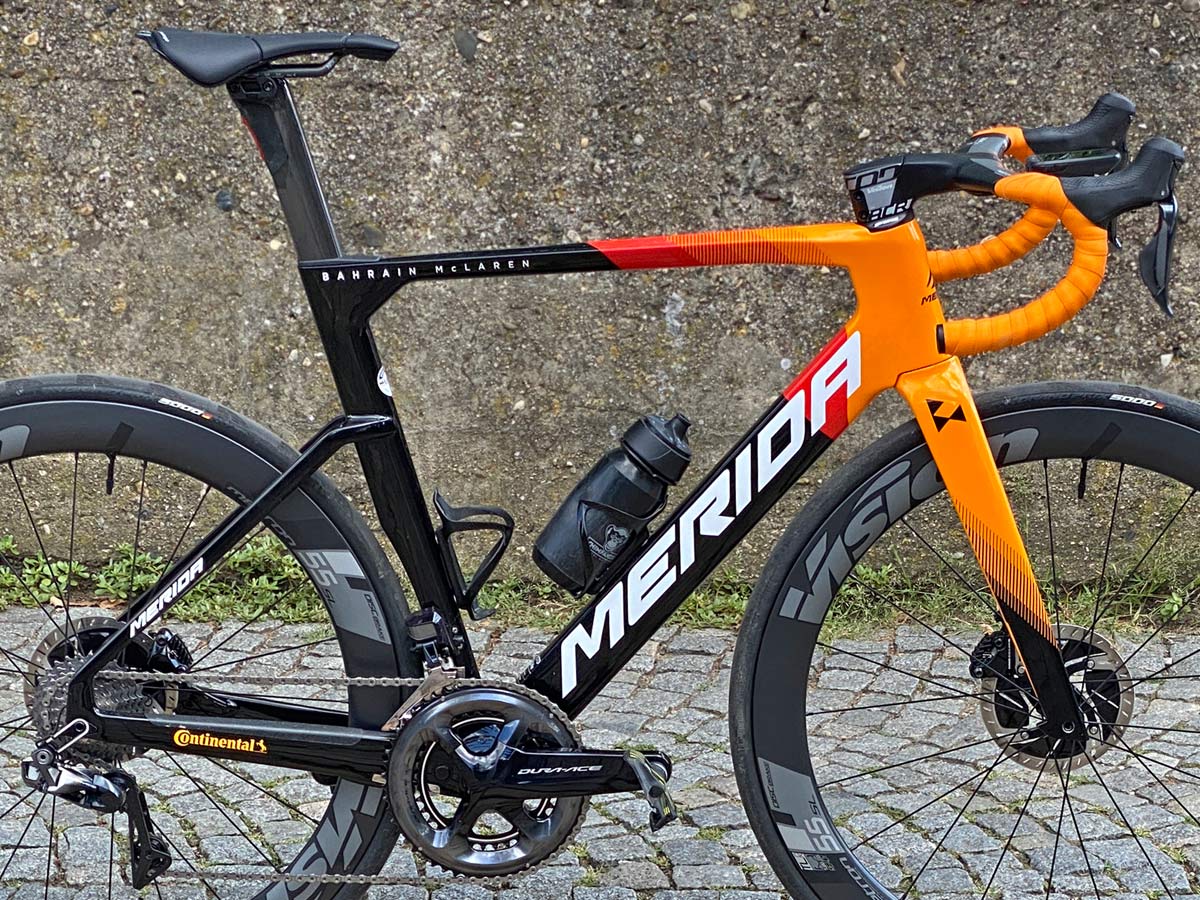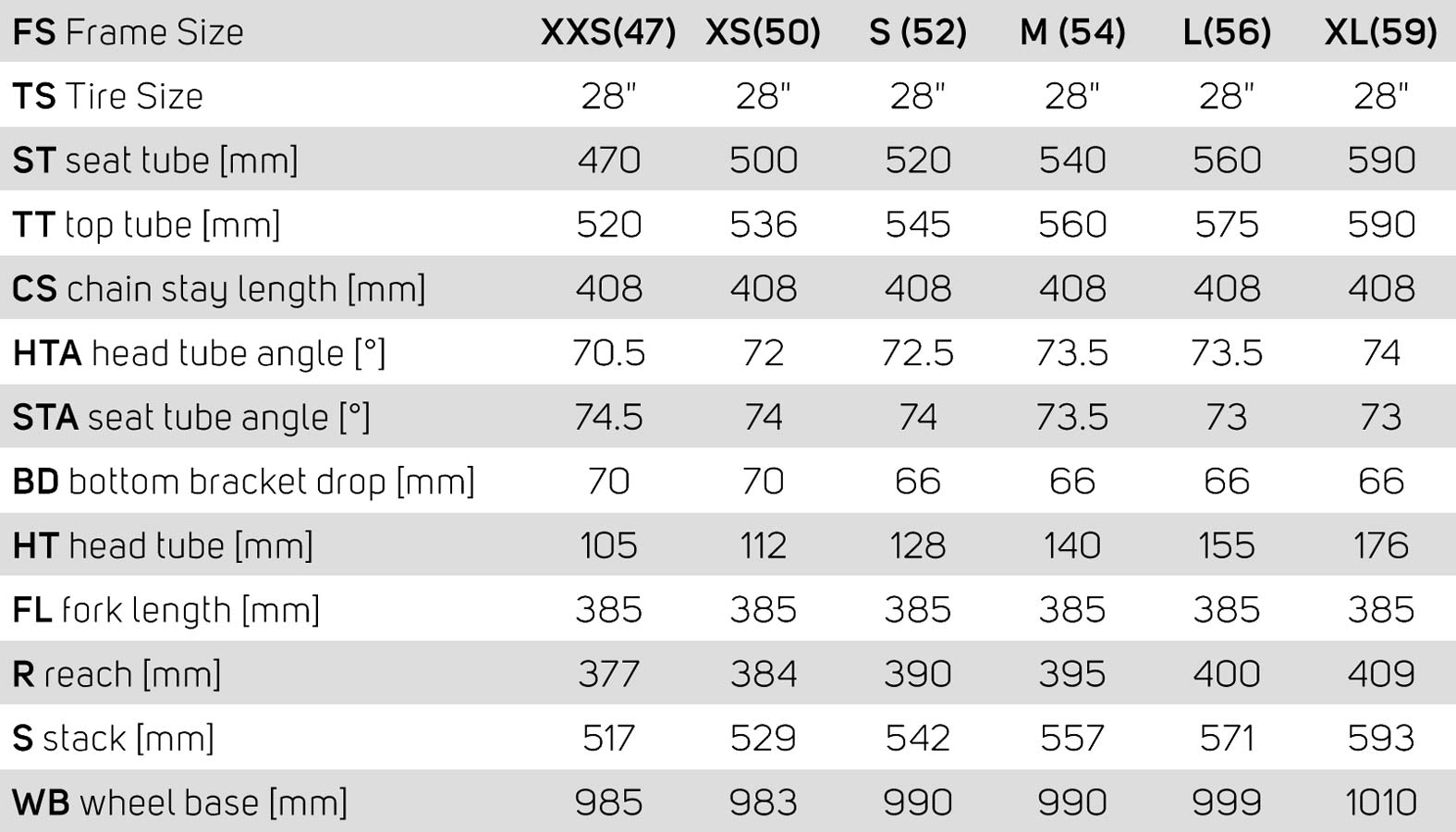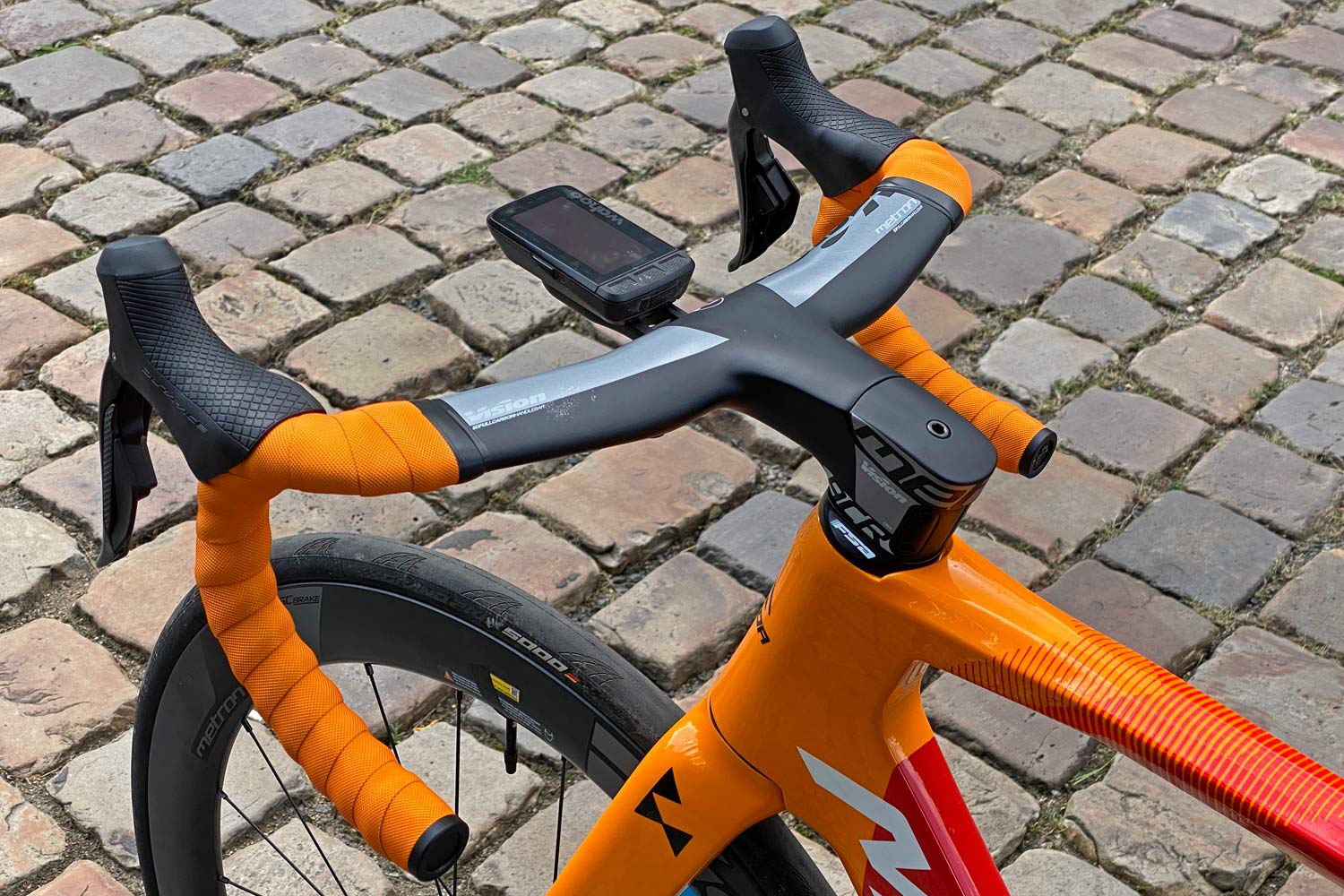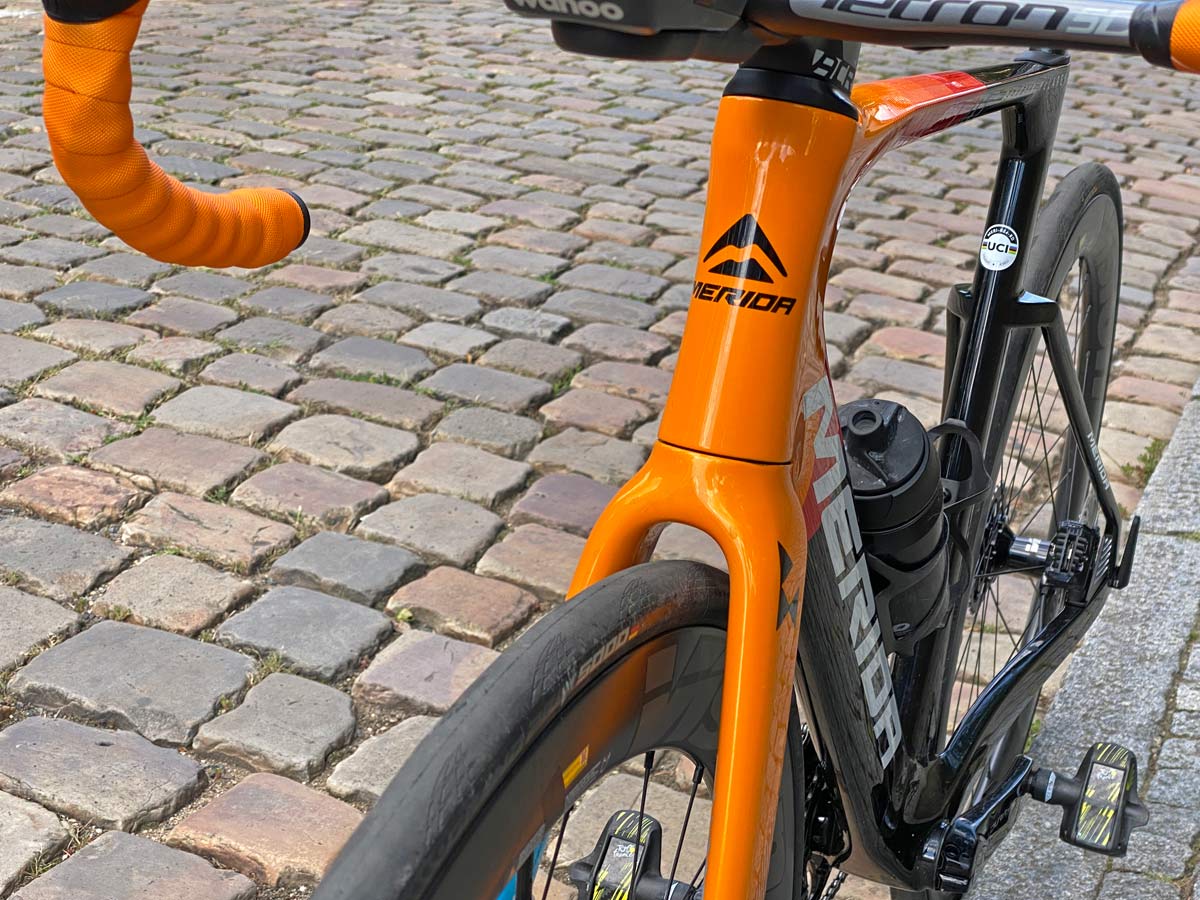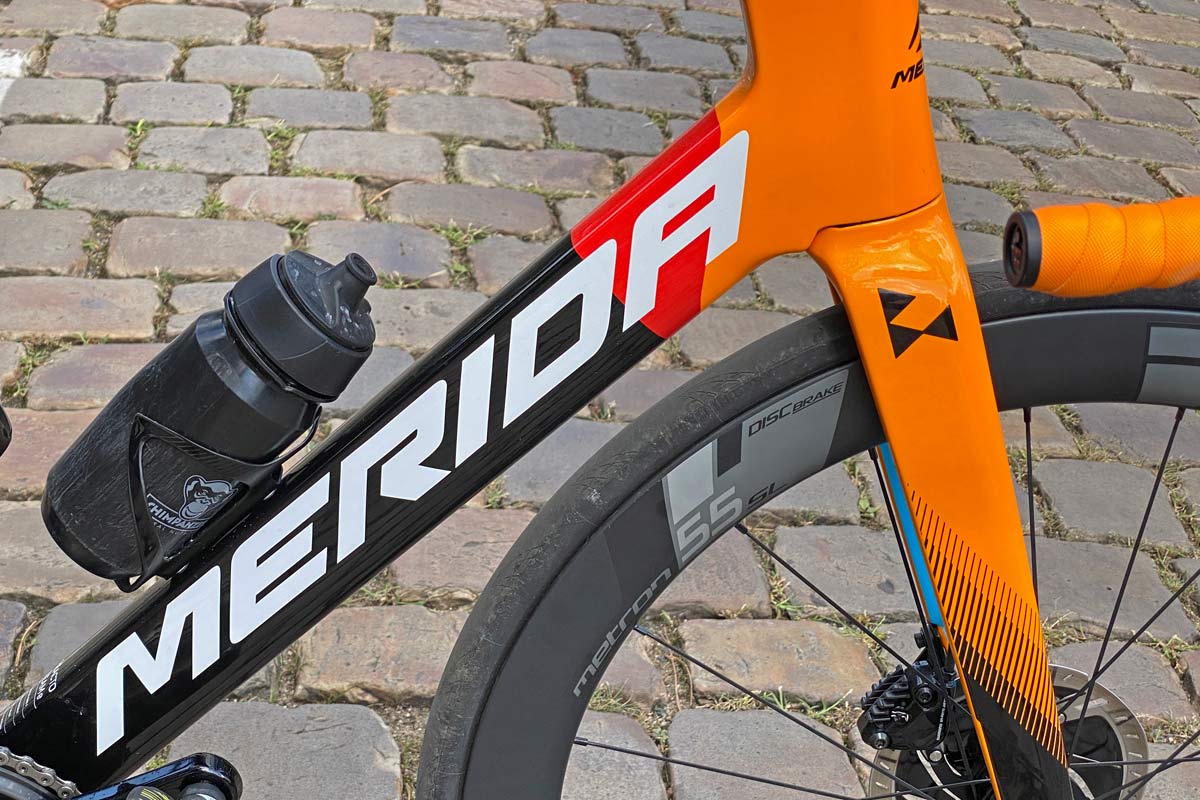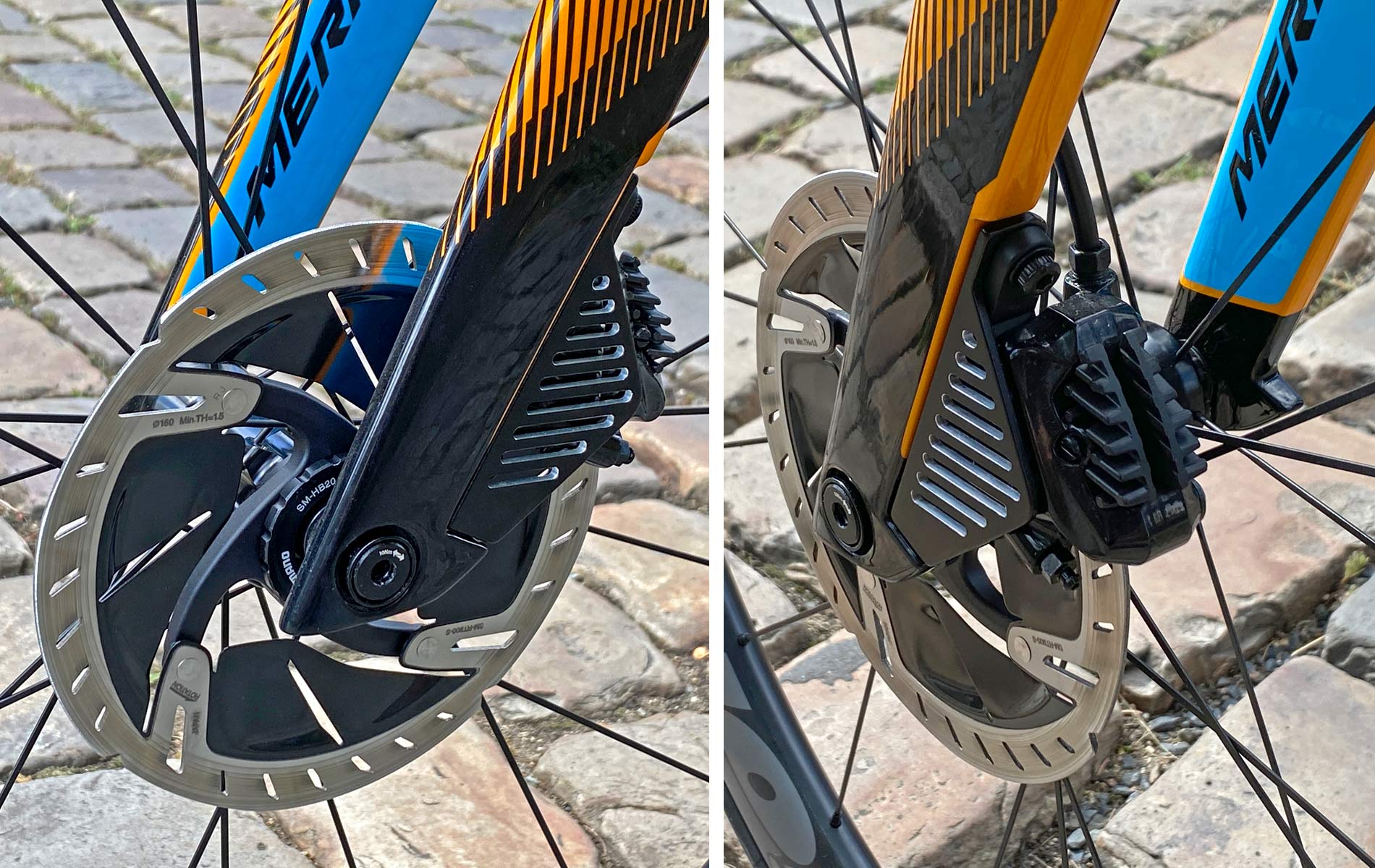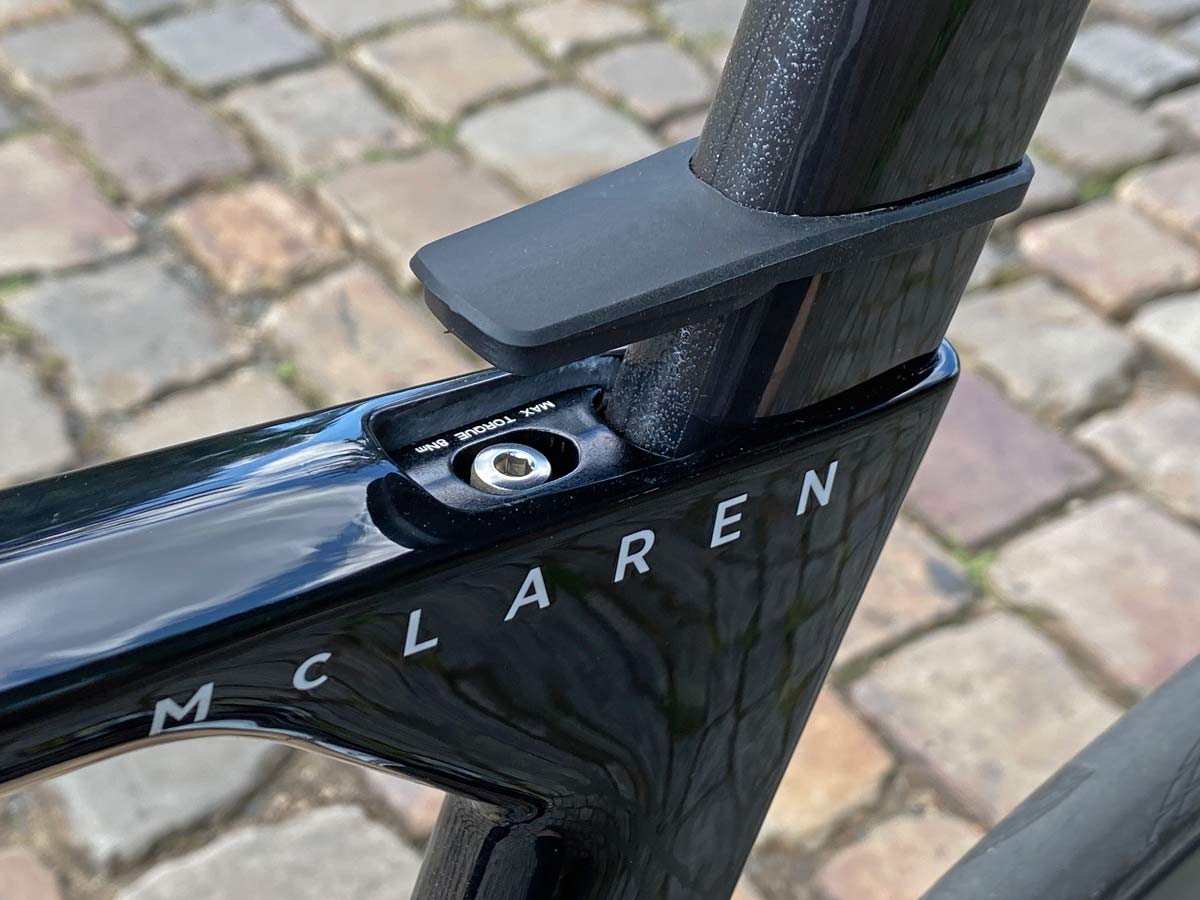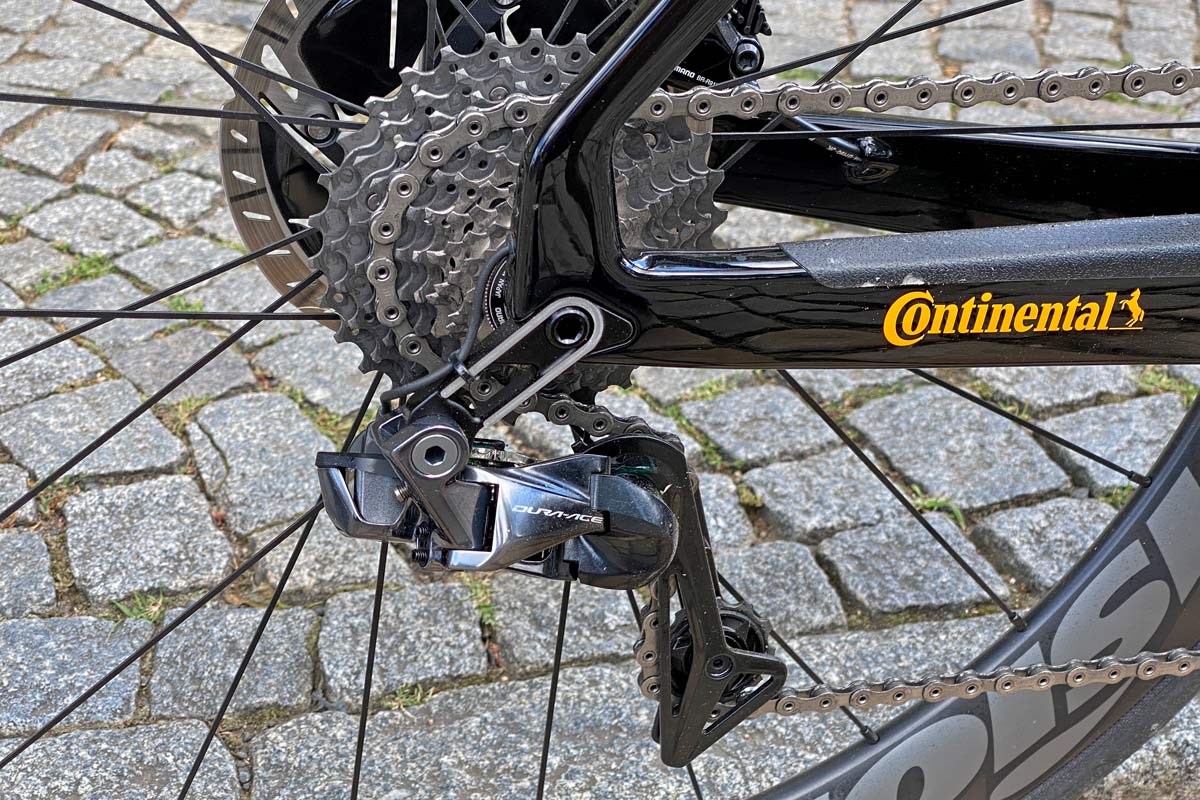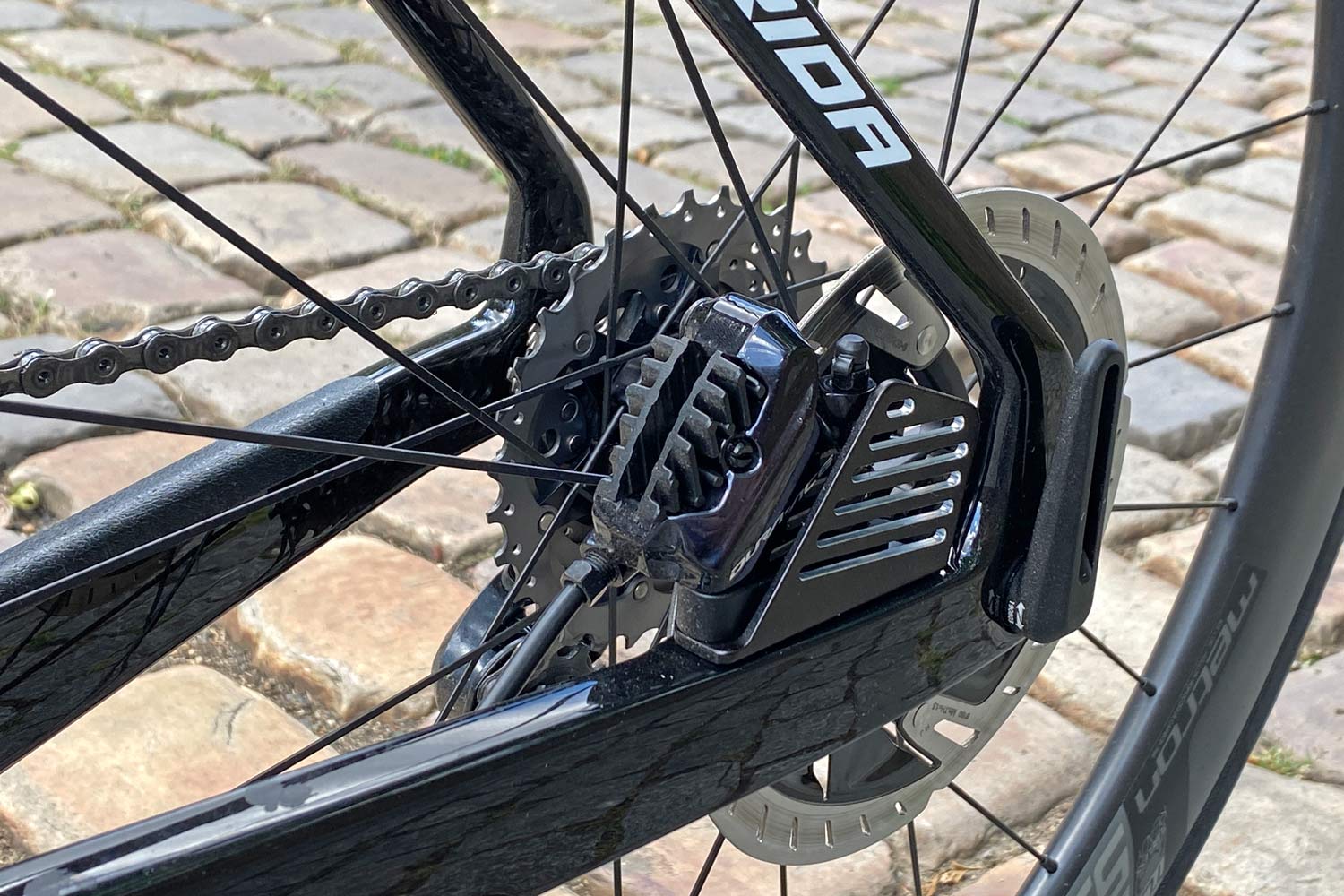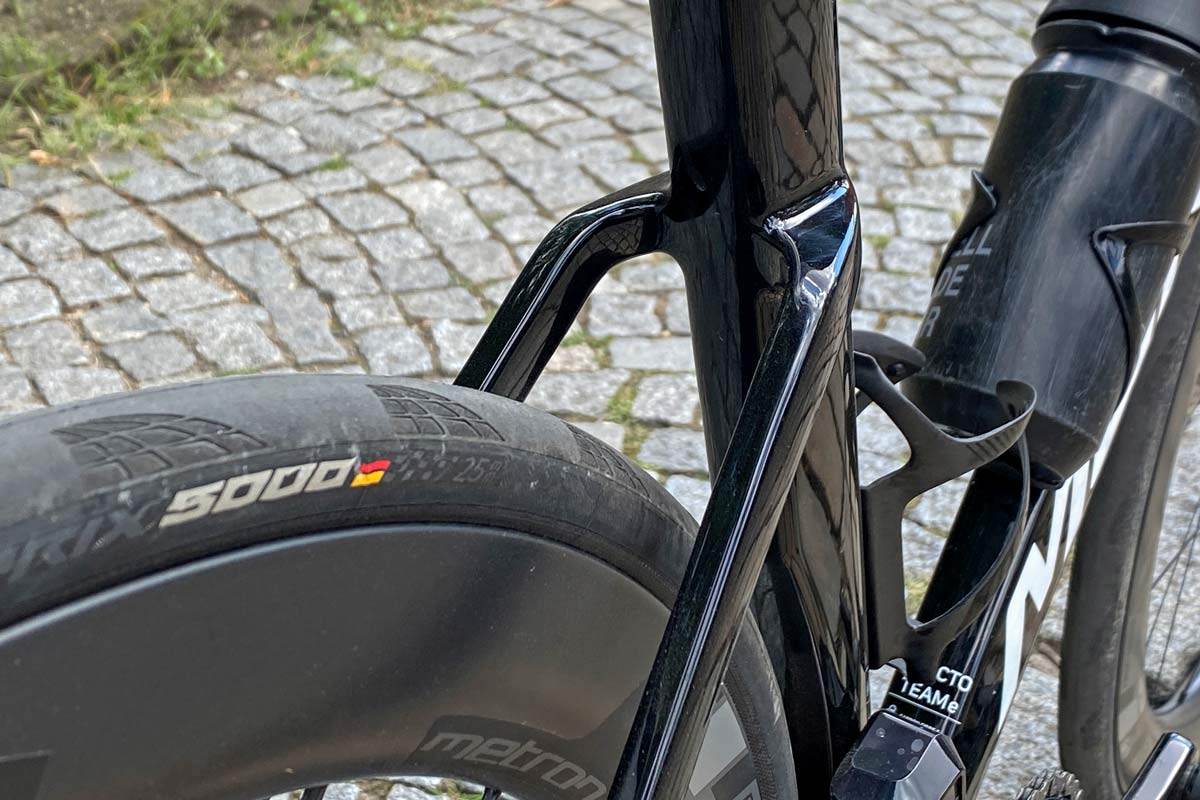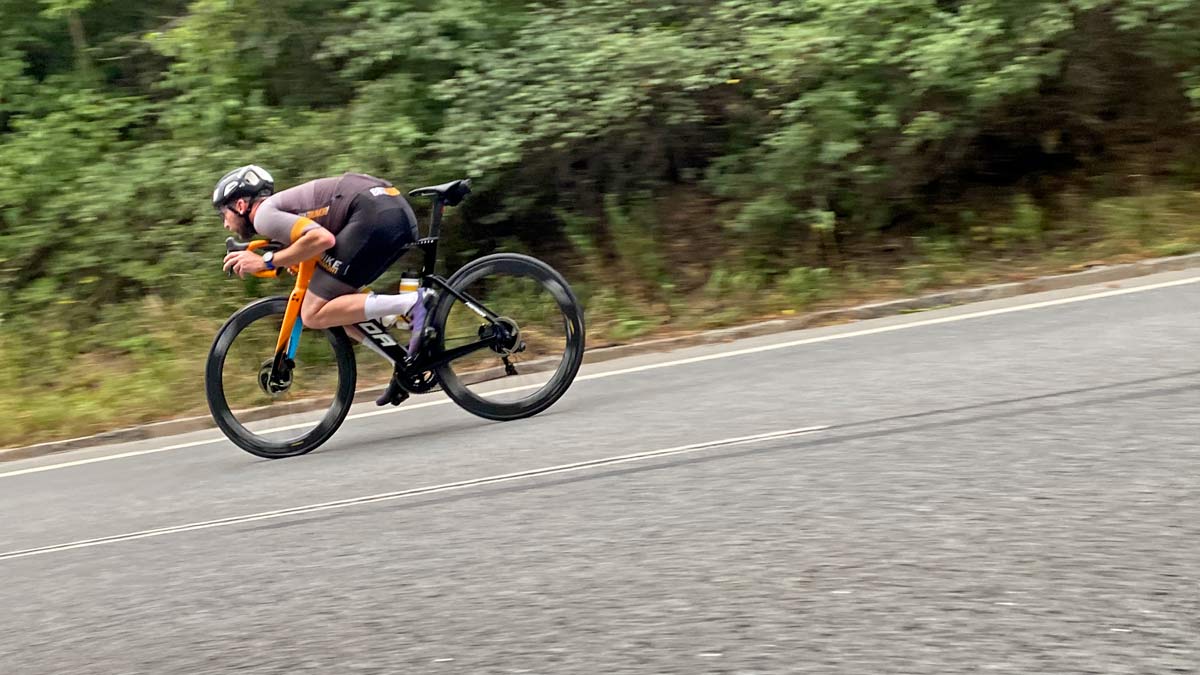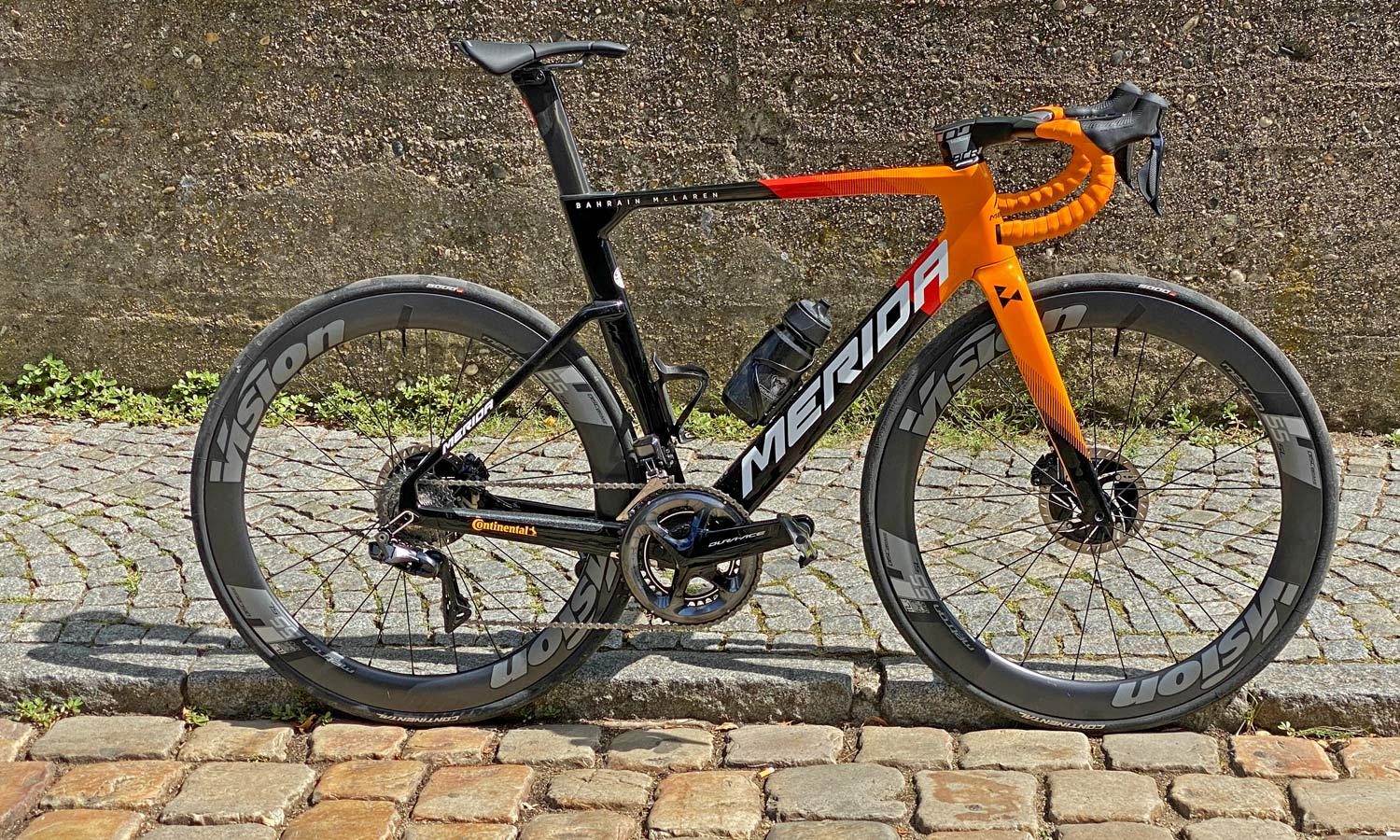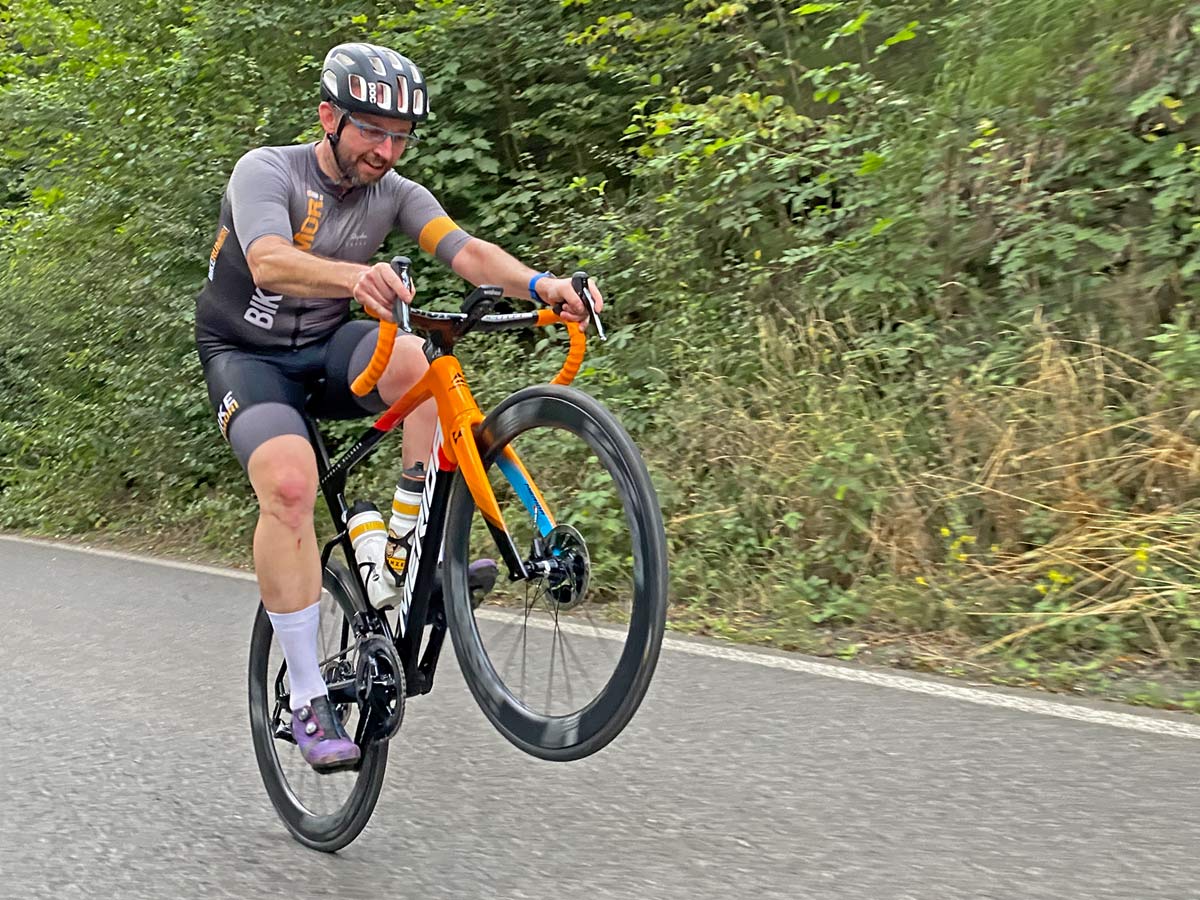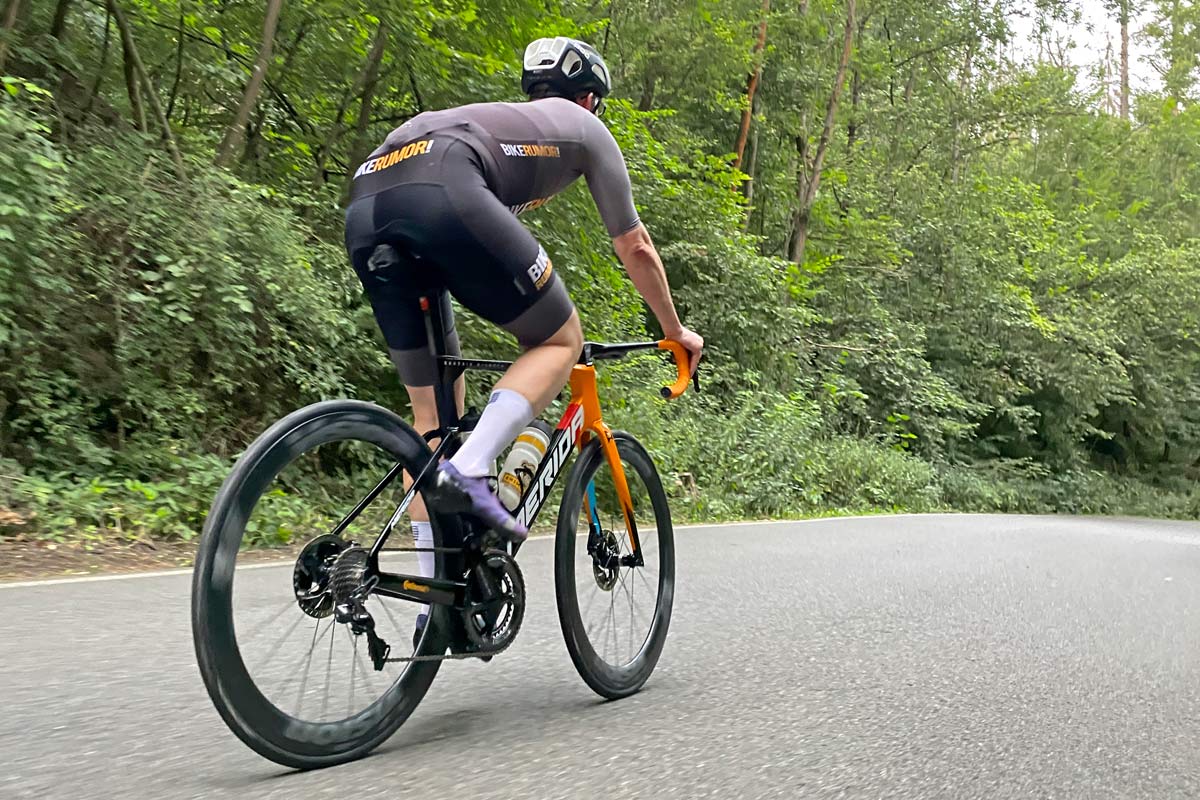Merida’s Reacto aero road bike enters its fourth generation with an all-new carbon frame that through subtle updates is more versatile than ever while still improving on aerodynamics. Originally planned to for its unveiling on the eve of the Tour de France for its Bahrain McLaren race team, the new aero bike is here now, and will be in your local shop in the coming weeks.
2021 Merida Reacto everyday race, carbon aero road bike
The new Reacto cuts a very similar silhouette to the previous generation Reacto Disc, but a closer look reveals a wholesale redesign that offers improved aerodynamics, bigger tire clearance & more compliance, plus full commitment to disc brakes. It’s what Merida is hyping as ‘Aerodynamics Redefined’.
Merida claims the 2011 debut of the original Reacto was ahead of the curve of aero road as a category – helping define the bladed fork, seattube cutout, deep aero seatpost & dropped stays aesthetic that make most modern aero bikes look alike. Now almost needless to say, a decade later and every road race bike has become an aero bike, while the Reacto continues to evolve as an all-rounder. The new Reacto IV builds on almost ten years of aero road race experience, building wind tunnel & time trail tech into an everyday race bike.
2021 Merida Reacto IV – What’s new?
After first setting a benchmark that the new Reacto needed even lower drag numbers, Merida set out to make it even more versatile, so it could be the road racer’s first choice for any circuit or race course. That means tweaking transitions, refining the details, going fully integrated, and adopting the modern road adage that bigger tires are more comfortable, offer improved control & are even faster with reduced rolling resistance. Merida put their updated design constraints into CFD to determine how that could iterate & evolve a faster all-around race bike.
One thing that didn’t really change much is the Reacto’s geometry overt the last Reacto Disc. The small tweak though, is that while the XXS-XL range and numbers at either end remain the same, Merida dropped the middle S-M & M-L sizes in favor of a more standard M. So the new Reacto comes in six frame sizes.
Drag reduction – Tech details
The most obvious change is the move to a completely integrated cockpit solution with no exposed cables. A one piece cockpit and electronic shifting make that easy enough, but Merida’s adoption of the FSA ACR headset system means compatibility with more affordable separate bars & stems, and mechanical shift drivetrains (thanks in part to hydraulic disc braking across the board.)
A well-integrated cockpit even with cables exposed was already said to have huge aero impacts, and Merida says this version cuts drag by another 2 Watts.
In a more subtle improvement, revised fork profiling with a crown that integrates more seamlessly into the downtube apparently saved another 2 Watts of drag too, also helped by eliminating exposed front brake routing.
The fork also gets a couple more neat tricks, with fork flaps like we’ve seen from Pinarello & Scott to smooth airflow coming off the axles, and update Disc Coolers. Already debuted on the previous model, Merida’s Disc Coolers become much more integrated as well. Now they tuck more cleanly out of the way, pulling double-duty of smoothing airflow over the calipers like a cowl but acting as a functional machined alloy heatsink with increased vented surface area to keep disc brakes running cool.
More detail refinements help reduce drag across the bike. That upper ACR headset cap also allows for smoother integration, with the new Reacto moving to a straight, flat top tube. Moving back, the internal wedge seatpost clamp also now gets an improved rubber cover. And the dropped seatstays drop even further with smaller and smoother shaping as they transition around the deep seattube.
Even back at the dropouts – where Merida switched from RAT to their own bolt-on thru-axles with removable lever – a short vertical section of seatstay decreases frontal area exposed to the wind, while allowing a more ‘tucked-in’ direct mount brake setup on the non-driveside.
But it wasn’t only aero improvements. In fact, if that was all Merida had done to the old Reacto, this new bike would have even less drag than it does. But the biggest thing you can’t see in silhouette is the big boost in tire clearance. Now with room to fit modern 30mm race tires, the 2021 Reacto offers more comfort and control, especially over rough and irregular roads like those of the Classics.
And inside, Merida says their revised carbon layup and the elastomer-powered compliance of the S-Flex seatpost means the new Reacto is more comfortable than ever, while also getting faster.
Wind tunnel-proven drag reduction
Merida says that once they solved all the details in the design stage, they took the final prototype into the wind tunnel to see how it added up the drag reductions against the wider tires. Using the German TOUR ‘moving leg dummy’ protocol, Merida says the new Reacto requires 209W to sustain the 45km/h pace, reducing drag by 1W over the already fast last generation. It’s not a revolutionary, but compared to a bike designed for 25mm tires, drag reduction paired with significant gains in comfort & control sounds nice.
Carbon Reacto frameset – Tech details
Beyond all of the aero tweaking, the carbon frameset comes in two levels of carbon spec. Higher-end models get the lightest & most time-consuming to produce CF5 hi-mod frameset, with claimed frame weight of 965g (size M +/- 3% depending on paint ) and another 457g for the fork. That’s a 45g weight savings claim on the frame, but 89g heavier in the new wider fork.
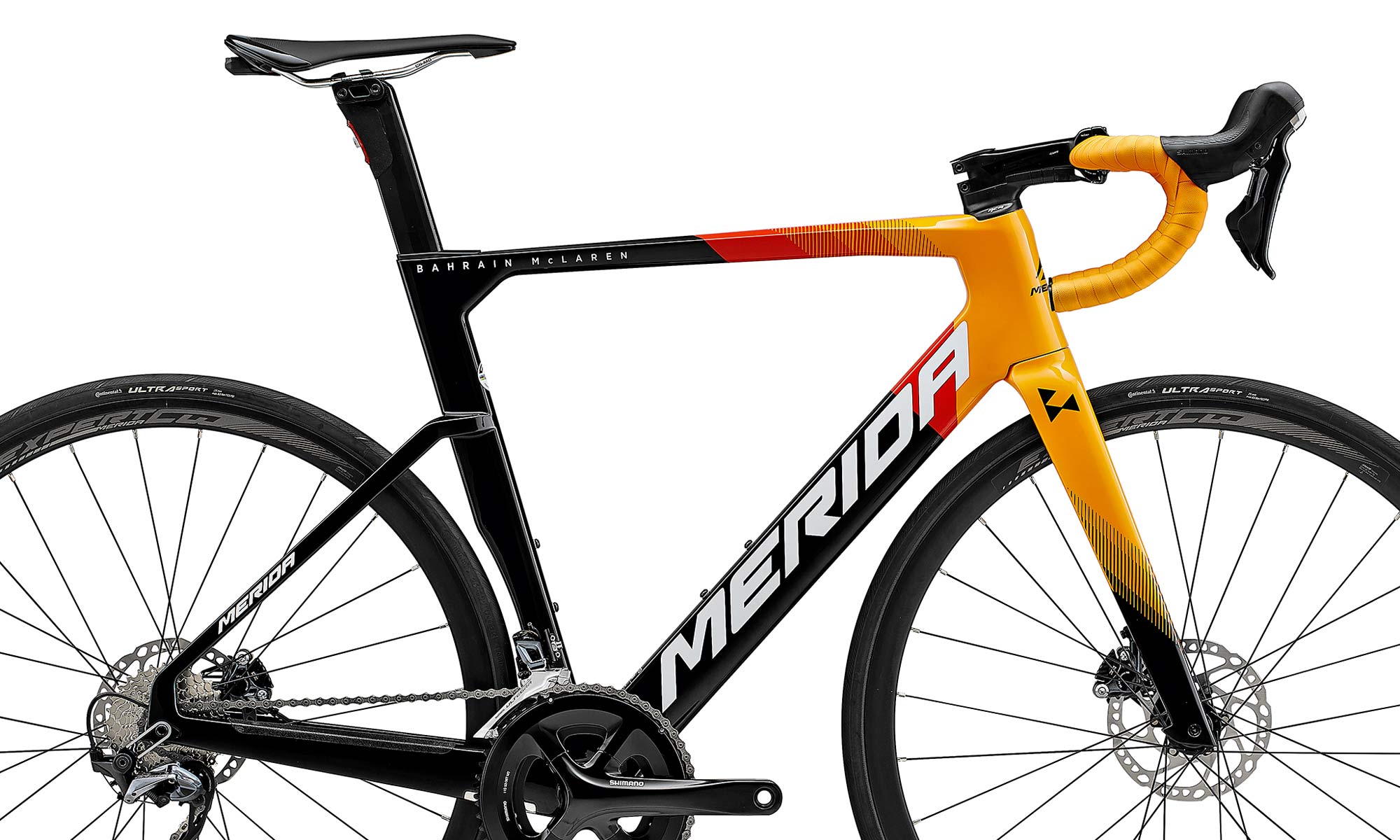
The lower CF3 spec carbon frame shares the same geometry now, and all of the same features, just at a slight 213g total weight penalty (~1145g frame & 490g fork), but with the same stiffness levels. It’s even available in the same great Bahrain McLaren colors in the Reacto 5000!
The new Reactos feature 1.5-1.25″ tapered headtubes to fit 1.5-1.125″ tapered forks with the ACR headset. They use standard 12mm thru-axles, flat mount disc brakes, PF86 bottom brackets, and Shimano direct mount derailleur hangers. The CF5 frames only include internal routing for electronic shifting, but the CF3 works with full internal routing for either electronic or mechanical shift setups. The aero seatpost with its flip-flop offset head design & S-Flex elastomer, also includes Merida’s integrated rear LED strobe taillight for increased visibility out on the road.
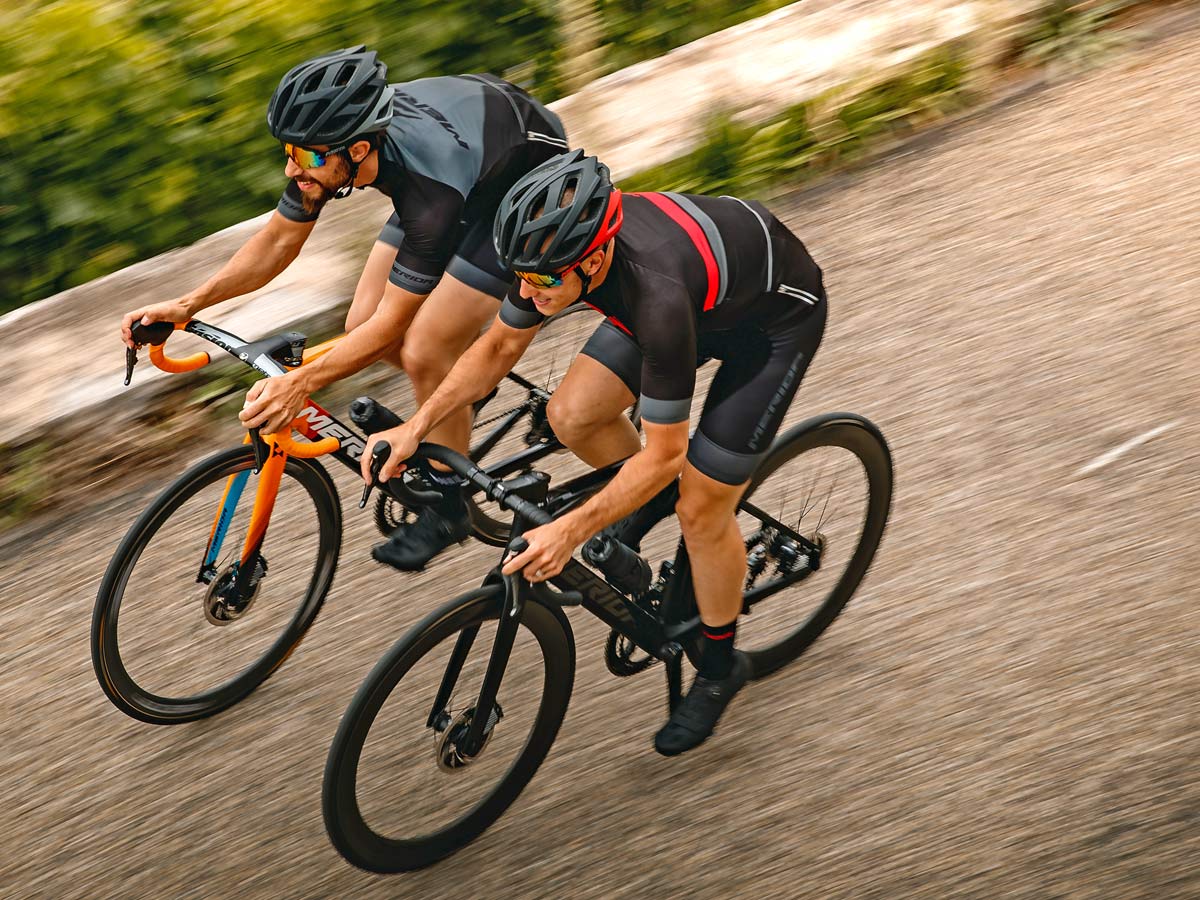
The new Reacto makes the race choice easier, there’s no longer a need to pick comfort over aero performance on race day. Your sprinter stage bike can be the same as your cobble classics bike.
2021 Reacto – Options, pricing & availability
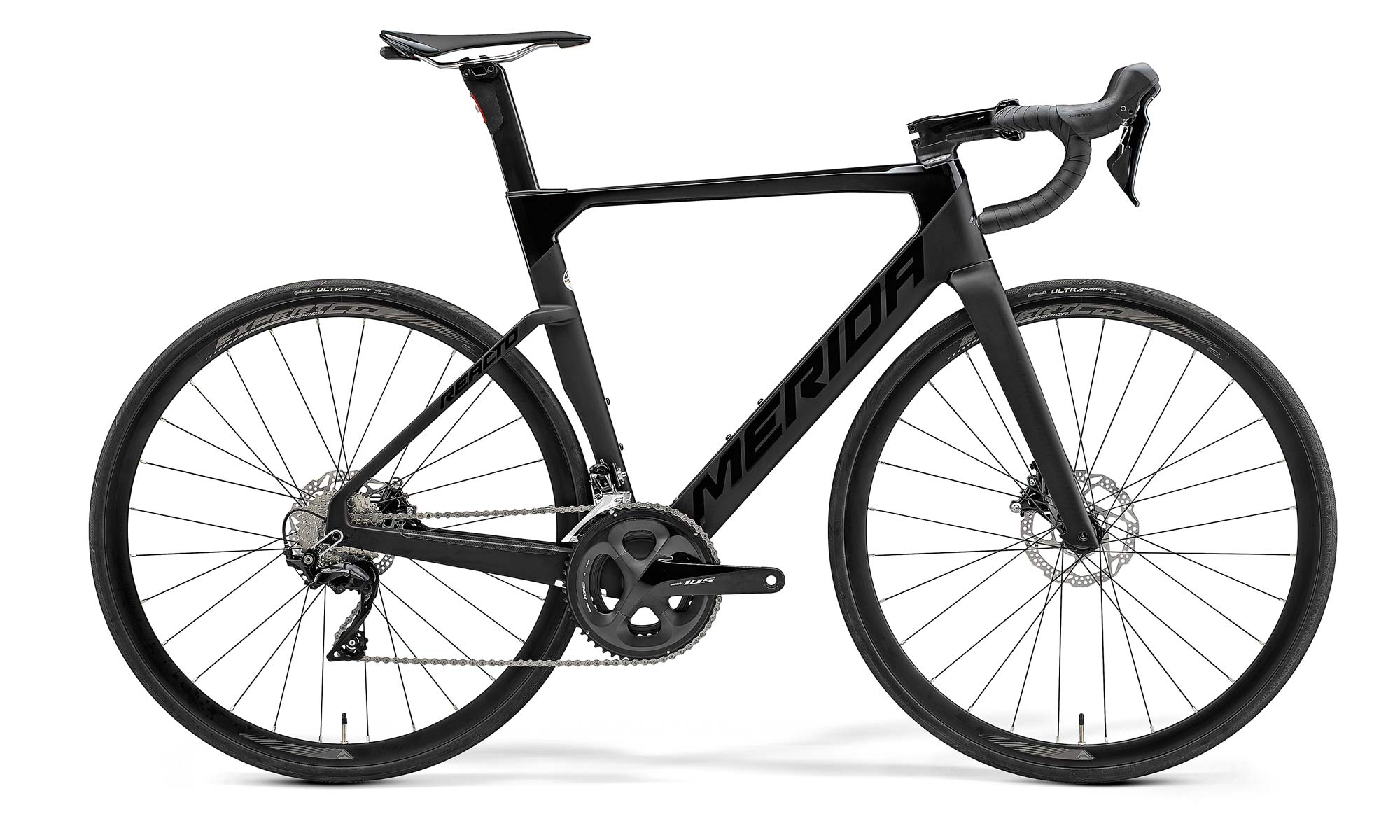
The new 2021 Merida Reacto is offered in a number of complete bike builds using the two levels of carbon frames (depending on market) from the mechanical 105 equipped Reacto 4000 for £2250 or Reacto 5000 with a mixed Ultegra mechanical group for £2450 / 2700€…
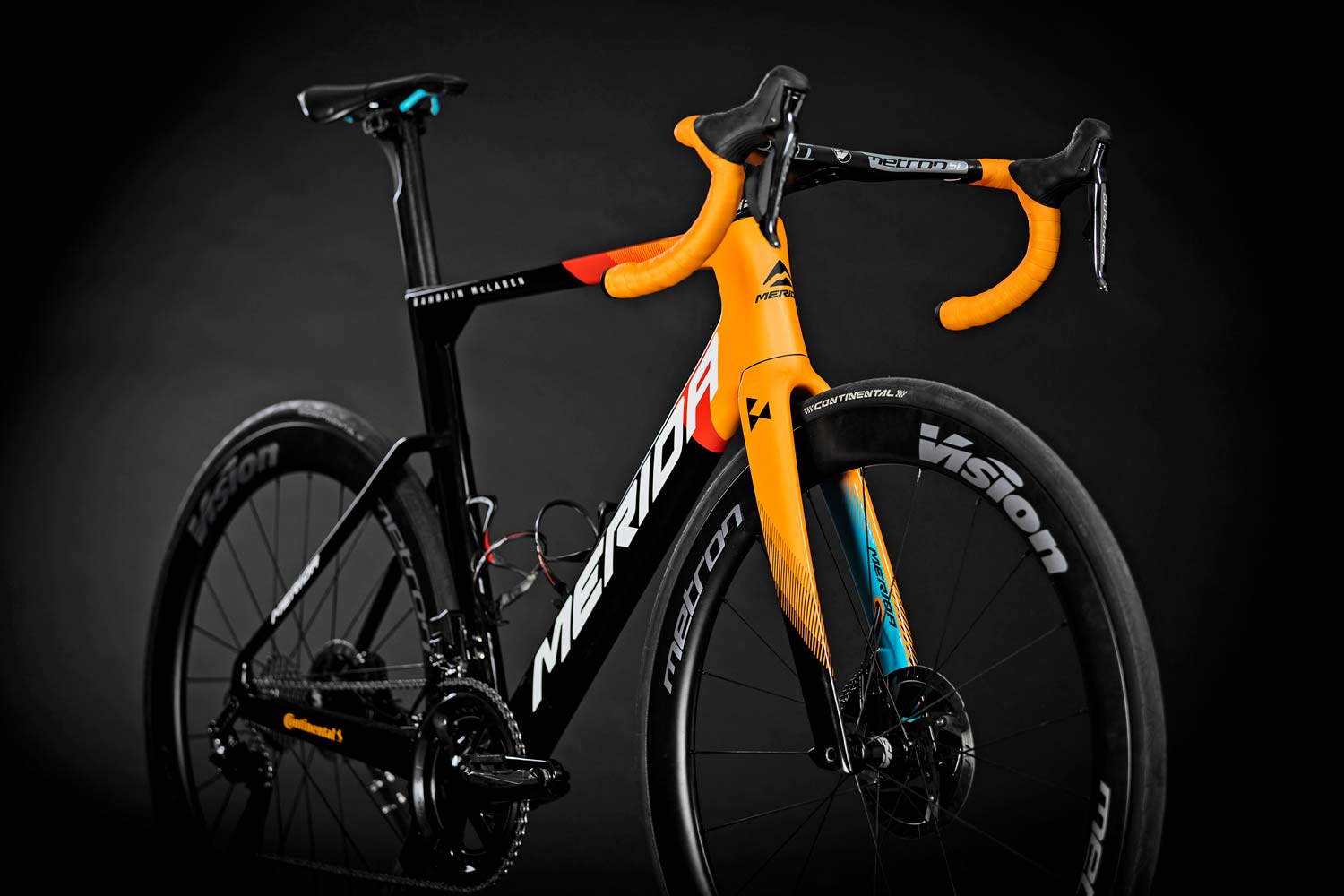
…up to this Reacto Team-E in Bahrain McLaren livery for £9000 / 10,300€ with a complete Dura-Ace Di2 group with powermeter, premium Vision carbon cockpit & bars. Exact in-shop availability will vary a bit from country to country, mostly due to COVID-impacted deliveries, but the new bikes should be popping up in bike shops starting in about two weeks, through the end of August.
First Rides: Fast roads on the new Merida Reacto Team-E
We haven’t yet had quite as much time to ride the new Reacto as we did the new Scultura Endurance – the Reacto only arrived three days ago. So, a more detailed review will have to wait. But from the first couple of rides, there is no doubt that the bike exudes speed. It just feels fast. Looking down and not seeing any cables or anything out in the wind is good for psychology of speed, and makes you want to pedal hard to see how fast you can make the bike go.
The Czech roads we call our stomping ground tend generally to be rough – whether talking deteriorating asphalt or the prevalence of cobblestones. In either case, the addition of big tire clearance is certainly a welcome move in modern race bikes. Our test bike is fitted with 25mm GP5000s (that actually measure 27mm on these Vision Metron wheels), but rest assure that I will push the 30mm limit before I complete a full test on this bike. In the meantime, as we’ve seen before, the cutout/elastomer insert in the deep seatpost does a surprising job of smoothing the chattery bumps. I won’t lie, this big carbon bike with 55mm deep wheels is loud when bombing downhill over the cobbles… but the feel in the drops and at the saddle is surprisingly smooth.
I’m looking forward to logging plenty more fast rides over our rough roads to see how it fares over time!


